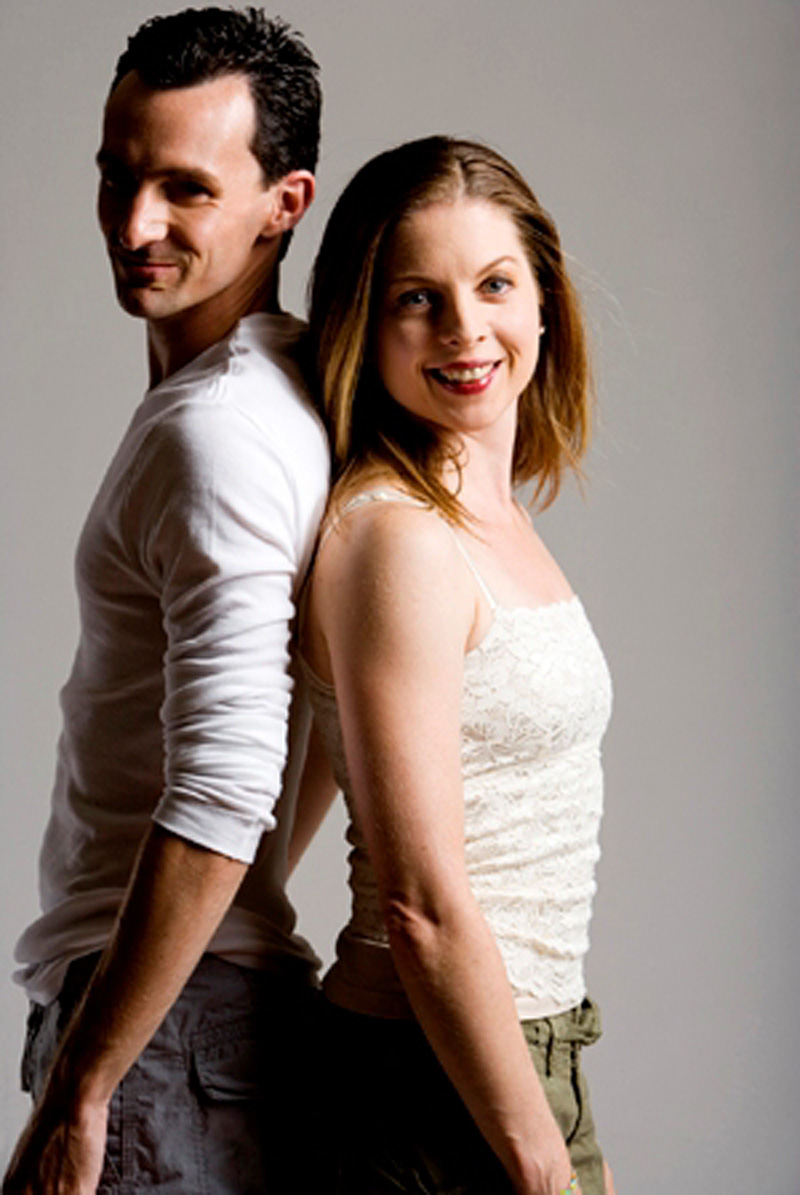In their current program, Seattle Dance Project directors Julie Tobiason and Tim Lynch have pulled off the dance equivalent of inviting the parents over for dinner, then asking them to cook the roast. The guest is Kent Stowell, their old boss at Pacific Northwest Ballet, and he responded to his commission with a charming little duet called b6. Set to an Americana score by William Bolcom, b6 is a flirtatious game laced with a couple of vaudeville tricks. It reveals an easy camaraderie between Michele Curtis and Joseph Anderson. Stowell has always had a deep affection for Broadway and Hollywood musicals; in b6 he borrows Judy Garland’s costume from the “Get Happy” number in Summer Stock and finds inspiration in her sassy appeal.
The evening’s other premiere, To Converse Too, uses the baroque motor of Bach’s unaccompanied cello suites to drive an ensemble of dancers through a beautiful series of small groups and solos. As an alum of New York City Ballet, choreographer Edwaard Liang says he is from “the House of Balanchine,” but his movement vocabulary is more idiosyncratic than the neoclassical standard. Full of agitated gestures and long, complex phrases with multiple direction shifts, To Converse Too might seem bewildering but for the evident tenderness and connection among its performers. Liang comfortably places dancers on the floor; in other sequences he inverts the balletic standards of long lines and outward rotation, making his performers isolated and vulnerable. The dancers often seem like small animals as they nudge and nuzzle among one another.
Also on the program, Mark Haim’s No More Sweet Hours of Rapture puts soloist Betsy Cooper through a series of postmodern structural games that disrupt order and timing. But the work isn’t cold or academic; Haim’s choreography has an intuitive, emotional development that shines here. Set to the aria “Ach, ich fühl’s” from Mozart’s The Magic Flute, the dance plays off the tension and longing in the score, whose dramatic arc Cooper ably follows.
SDP also repeats Cooper’s In Another Land and James Canfield’s Because from last fall’s program set to rock music. Although they have some great individual moments, especially Kory Perigo’s courtly gestures in Land and Lynch’s fluidity in Because, these two dances tend to undercut themselves with classical movement choices. The phrases that are the most like ballet are the least successful, when classroom steps clash with the emotional momentum of the Stones or Beatles.








